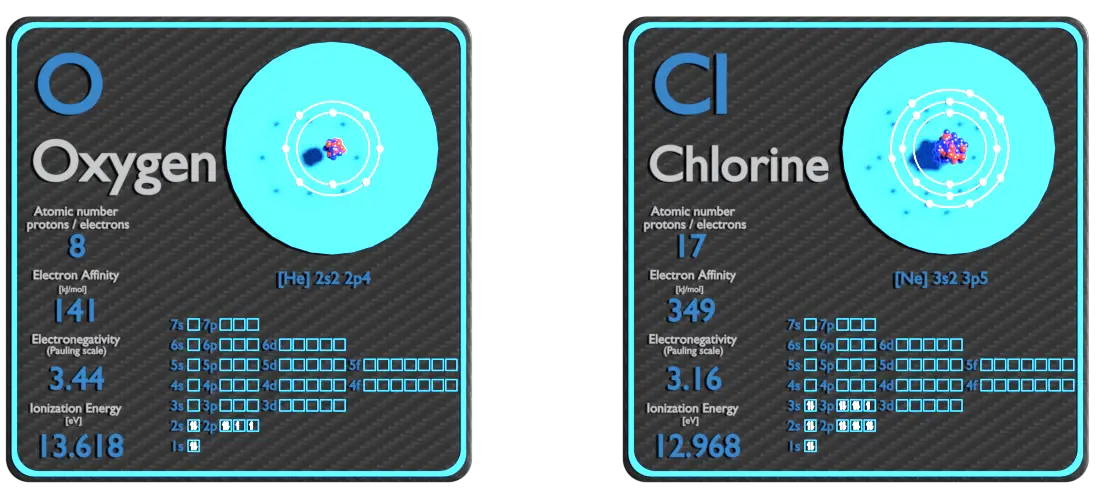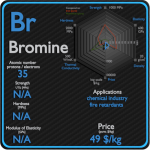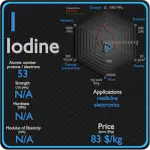This article contains comparison of key thermal and atomic properties of oxygen and chlorine, two comparable chemical elements from the periodic table. It also contains basic descriptions and applications of both elements. Oxygen vs Chlorine.

Oxygen and Chlorine – About Elements


Source: www.luciteria.com
Oxygen and Chlorine – Applications
Oxygen
Common uses of oxygen include production of steel, plastics and textiles, brazing, welding and cutting of steels and other metals, rocket propellant, oxygen therapy, and life support systems in aircraft, submarines, spaceflight and diving. Smelting of iron ore into steel consumes 55% of commercially produced oxygen. In this process, oxygen is injected through a high-pressure lance into molten iron, which removes sulfur impurities and excess carbon as the respective oxides, sulfur dioxide and carbon dioxide. Uptake of oxygen from the air is the essential purpose of respiration, so oxygen supplementation is used in medicine. Treatment not only increases oxygen levels in the patient’s blood, but has the secondary effect of decreasing resistance to blood flow in many types of diseased lungs, easing work load on the heart.
Chlorine
Chlorine is used in the manufacture of a wide range of consumer products, about two-thirds of them organic chemicals such as polyvinyl chloride (PVC), many intermediates for the production of plastics, and other end products which do not contain the element. As a common disinfectant, elemental chlorine and chlorine-generating compounds are used more directly in swimming pools to keep them sanitary. While perhaps best known for its role in providing clean drinking water, chlorine chemistry also helps provide energy-efficient building materials, electronics, fiber optics, solar energy cells, 93 percent of life-saving pharmaceuticals, 86 percent of crop protection compounds, medical plastics, and much more.
Oxygen and Chlorine – Comparison in Table
| Element | Oxygen | Chlorine |
| Density | 0.00125 g/cm3 | 0.0032 g/cm3 |
| Ultimate Tensile Strength | N/A | N/A |
| Yield Strength | N/A | N/A |
| Young’s Modulus of Elasticity | N/A | N/A |
| Mohs Scale | N/A | N/A |
| Brinell Hardness | N/A | N/A |
| Vickers Hardness | N/A | N/A |
| Melting Point | -209.9 °C | -101 °C |
| Boiling Point | -195.8 °C | -34.6 °C |
| Thermal Conductivity | 0.02598 W/mK | 0.0089 W/mK |
| Thermal Expansion Coefficient | N/A | N/A |
| Specific Heat | 1.04 J/g K | 0.48 J/g K |
| Heat of Fusion | (N2) 0.7204 kJ/mol | 3.23 kJ/mol |
| Heat of Vaporization | (N2) 5.56 kJ/mol | 10.2 kJ/mol |





















